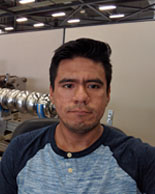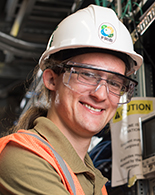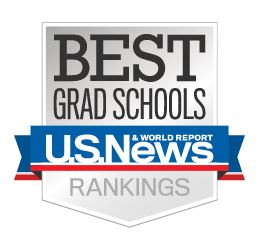Student testimonials archive
The Accelerator Science and Engineering Traineeship (ASET) program at MSU offers PhD and master's graduate students in physics and astronomy and engineering an exciting training opportunity.
The ASET program is part of MSU’s nuclear physics graduate program, which is nationally top-ranked according to the U.S. News & World Report. Additionally, each year MSU awards 10 percent of nuclear physics doctorate degrees.
Below are testimonials from some of the program’s past students.
Crispin Contreras

Crispin Contreras is pursuing a PhD in physics at Michigan State University, with Professor of Physics Peter Ostroumov serving as his advisor. For his research topic, he is studying the electromagnetic and mechanical properties of medium beta superconducting elliptical cavities. Crispin joined the ASET program in spring 2018.
What are your research responsibilities?
My thesis project is to understand the limitations of fast tuners based on piezo actuators. Superconducting (SC) linear accelerators (linacs) can provide high power proton and ion beams in continuous wave (CW) or pulsed mode operation. Linacs have become an important tool for research in many fields such as high energy physics, nuclear physics, and material science just to name a few. One of the main components of a linac are the SC cavities which accelerate the particles via coupling to the radio-frequency (RF) power. Cavities in CW mode are operated at very high loaded quality factor (QL), which results in a small bandwidth making them susceptible to noise which causes detuning. In the case of cavities operated in the pulsed mode, the main source of detuning will be caused by radiation pressure (Lorentz force detuning). These types of detuning can be compensated by using more RF power which can be very costly. Additionally, if the power coupler can’t provide enough power to compensate for the detuning, the cavity will not be able to maintain the accelerating gradient which will result in operational downtime. A cost-effective approach to mitigating the detuning has been shown with the use of piezo actuators for fast detuning. I am studying control algorithms and the development of a reliable piezo tuning systems with long lifetime for applications both in CW or pulsed linacs.
How do you think participating in the ASET program at MSU will benefit your career?
With the support of the ASET program, I will be able to continue my research at Fermilab and will stay here until I finish my PhD. Staying at Fermilab is essential for my thesis project since my collaborators have a lot of experience working with resonance control. While at Fermilab, I will work to develop algorithms and hardware for my project. With my results, I will be able to present my work at the International Particle Accelerator Conference (IPAC), the Linear Accelerator Conference (LINAC), or the International Conference on Superconducting Radiofrequency (SRF).
The ASET program can support your stay at a national laboratory – at which laboratory are you interested in further your training and what are your research interests there?
I’ve spent five months in Fermilab with the SCGSR grant (six months) that I obtained in October 2017. During this time, I worked with different tuners. I measured the stiffness of the tuners as well as the piezo stroke for the 650MHz cavity. I have also measured the piezo stroke at cold temperatures (2k operation) for 1.3 GHz Cavities and 3.9 GHz cavities which are used for the LCLS II project. I have also been exposed to the low-level RF (LLRF) system that is used as well as their data acquisition system. I’m eager to learn more about this systems since they are critical for the resonance control. Lastly, while at Fermilab, I learned about resonance control of a system and how to characterize it.
Chris Richard

Chris Richard is pursuing a PhD in accelerator physics at Michigan State University with Adjunct Professor of Physics Steven Lidia serving as his advisor. For his research topic, Chris is studying non-relativistic beam instrumentation and diagnostics.
What are your research responsibilities?
My research focuses on accounting for non-relativistic effects in beam diagnostics. The electromagnetic fields from non-relativistic beams resemble those of charges at rest, causing the field extents on opposite sides of the beam pipe to differ. Beam diagnostics that rely on measuring the field at the pipe wall, such as button beam-position monitors (BPMs), are affected by this disparity in the fields. I am developing a helical pulse line that is capable of replicating the fields from non-relativistic beams. The pulse line will be used to calibrate for non-relativistic effects on a test stand.
Non-relativistic beams also have low rigidity, which allows their phase space to be measured using an Allison scanner. The measurements from an Allison scanner can be used to look for the formation of beam tails. It is important to minimize tails because they increase the beam size and can cause losses and damage to the accelerator. My research also involves developing a method of characterizing beam tails using action-angle coordinates. This method can then be used to study the tail formation and efficiency of scraping in the Proton Improvement Plan II Injector Test (PIP2IT) beamline at Fermilab.
How do you think participating in the ASET program at MSU will benefit your career?
Participating in the ASET program has given me the opportunity to perform research at Fermilab working with the PIP2IT beamline. This has given me hands-on experience with beam instrumentation and machine operation at PIP2IT.
The ASET program can support your stay at a national laboratory – at which laboratory are you interested in further your training and what are your research interests there?
I have spent four months at Fermilab through the ASET program. At Fermilab, I have worked with the PIP2IT beamline, which has provided a unique experience being able to work with a test beamline with non-relativistic beams. Because this beamline is still in development, I have been able to learn about many systems of an accelerator from low-level radio frequency (RF) to machine protection and the difficulties associated with developing these systems.

